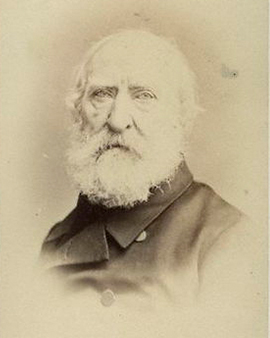In the alleys of Greenwich, London, on September 8, 1787, a remarkable soul was born whose life was to become miraculously intertwined with art. Abraham Cooper, a name respected today in the circles of art lovers, did not find his vocation through the usual channels. Born the son of a tobacco merchant, it was the proud hooves and neighing of horses that ignited his artistic spark. His employment at Astley's Amphitheatre and later as a groom for Henry Meux, the first of the Meux baronets, would prove to be turning points. With only a canvas on the stable wall and an acquired painting manual, he ventured to paint a portrait of his favorite horse. The work impressed his master so much that he bought it, paving the way for him to become a renowned animal painter Benjamin Marshall and thus began Cooper's extraordinary journey into the world of art.
While many may think that reproducing an art print by such an artist is a complicated undertaking, our mission is to reproduce Cooper's intense portrayal of horses and the battles in which they played a role with stunning clarity and fidelity. In 1814 he impressed the world with his "Tam O'Shanter" and just two years later he triumphed with his depiction of the "Battle of Ligny." Cooper's rise in the art world was meteoric, and in 1817 he was awarded membership in the Royal Academy, one of the most prestigious art institutions. He had a particular penchant for depicting Cavalier and Roundhead paintings. Although he lacked formal education, he possessed an unerring eye for detail, especially in the anatomy of horses, and his works are now coveted collectors' items.
Abraham Cooper left this world on December 24, 1868, but his legacy endures the ages. His final resting place may be in Highgate Cemetery, but through our high quality art prints, his genius lives on.
×





.jpg)
.jpg)
.jpg)
.jpg)
.jpg)
.jpg)
.jpg)
.jpg)
.jpg)
.jpg)
.jpg)
.jpg)
_-_(MeisterDrucke-1094268).jpg)
_-_(MeisterDrucke-1094268).jpg)
 - (MeisterDrucke-35355).jpg)
 - (MeisterDrucke-35355).jpg)
_-_(MeisterDrucke-892717).jpg)
_-_(MeisterDrucke-892717).jpg)
 - (MeisterDrucke-149639).jpg)
 - (MeisterDrucke-149639).jpg)
.jpg)
.jpg)
.jpg)
.jpg)
.jpg)
.jpg)
.jpg)
.jpg)
.jpg)
.jpg)
.jpg)
.jpg)
.jpg)
.jpg)
.jpg)
.jpg)
.jpg)
.jpg)
.jpg)
.jpg)
.jpg)
.jpg)
.jpg)
.jpg)
.jpg)
.jpg)
.jpg)
.jpg)
.jpg)
.jpg)
_-_(MeisterDrucke-1127744).jpg)
_-_(MeisterDrucke-1127744).jpg)
.jpg)
.jpg)
_-_(MeisterDrucke-1081159).jpg)
_-_(MeisterDrucke-1081159).jpg)
.jpg)
.jpg)
_-_(MeisterDrucke-1090007).jpg)
_-_(MeisterDrucke-1090007).jpg)
.jpg)
.jpg)
.jpg)
.jpg)
.jpg)
.jpg)
.jpg)
.jpg)
.jpg)
.jpg)






